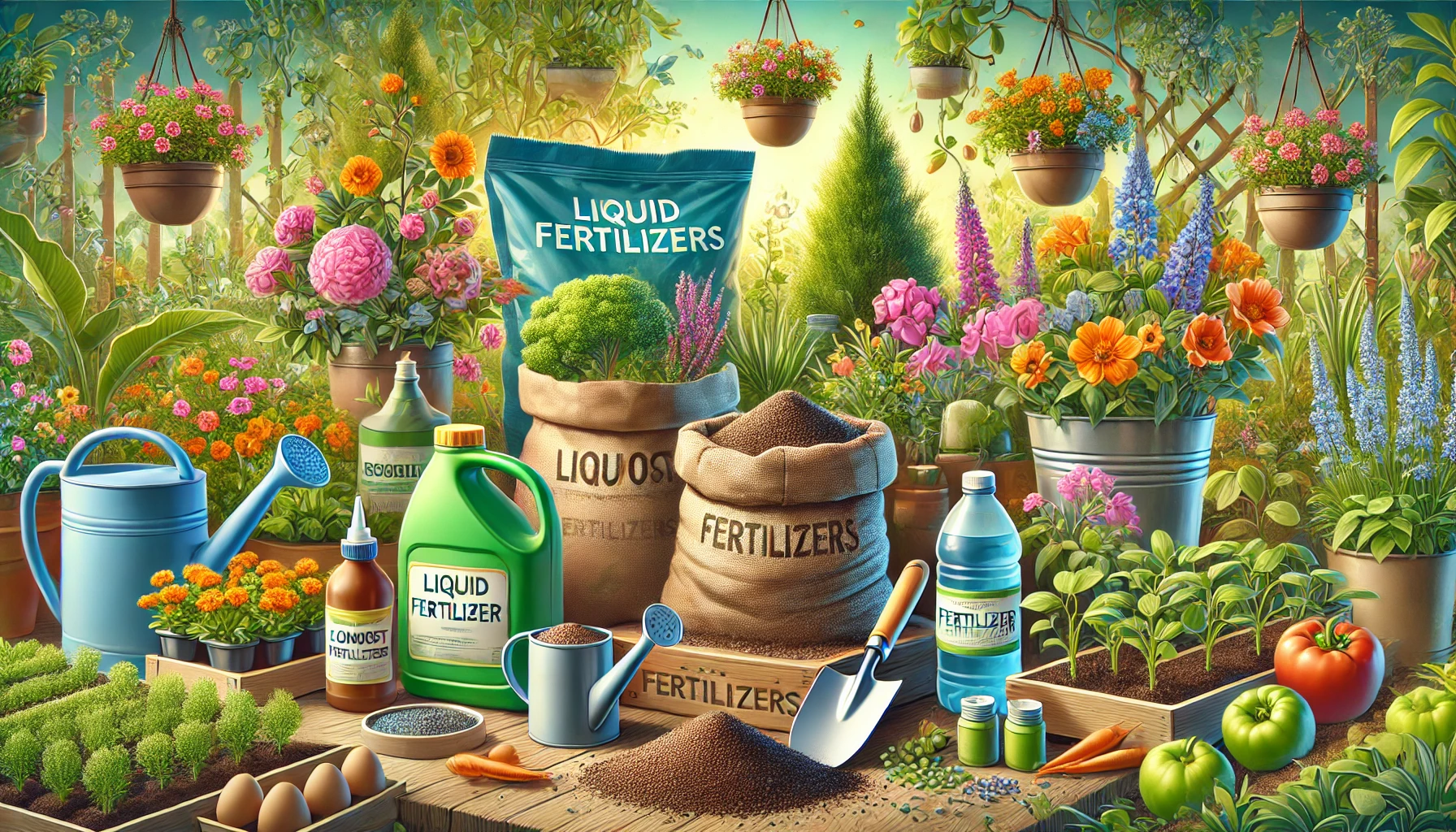Fertilizer is a key component of plant care, providing essential nutrients that support healthy growth, vibrant foliage, and abundant blooms. However, with so many types of fertilizers available, choosing the right one for your plants can feel overwhelming. This guide will help you understand how fertilizers work and how to select the best option for your plants’ specific needs.
Why Fertilizer Is Important
Plants require three primary macronutrients for growth:
- Nitrogen (N): Encourages leafy growth and lush foliage.
- Phosphorus (P): Supports strong roots, flowers, and fruit development.
- Potassium (K): Enhances overall plant health, disease resistance, and water regulation.
In addition to these, plants may also need micronutrients like calcium, magnesium, and iron, which are often included in fertilizers.
Types of Fertilizers
1. Organic Fertilizers
- Description: Derived from natural sources like compost, manure, or bone meal.
- Benefits: Improves soil health, releases nutrients slowly, and promotes beneficial microbial activity.
- Best For: Vegetable gardens, fruit trees, and eco-friendly gardening.
2. Synthetic Fertilizers
- Description: Chemically formulated to provide specific nutrients.
- Benefits: Delivers nutrients quickly and is easy to apply.
- Best For: Fast-growing plants or when immediate results are needed.
3. Slow-Release Fertilizers
- Description: Releases nutrients gradually over time.
- Benefits: Reduces the risk of over-fertilizing and requires less frequent application.
- Best For: Houseplants, shrubs, and ornamental plants.
4. Liquid Fertilizers
- Description: Diluted in water and applied to the soil or as a foliar spray.
- Benefits: Provides quick nutrient absorption and can be used for precise feeding.
- Best For: Container plants, vegetables, and flowering plants.
5. Specialized Fertilizers
- Description: Formulated for specific plant types, such as cacti, orchids, or acid-loving plants.
- Benefits: Tailored to meet the unique nutrient requirements of particular plants.
- Best For: Specialty plants with specific needs.
How to Choose the Right Fertilizer
1. Assess Your Plant’s Needs
- Identify the plant’s growth stage: Young plants may need more nitrogen for foliage, while flowering or fruiting plants require higher phosphorus and potassium levels.
- Check for signs of nutrient deficiencies, such as yellowing leaves (nitrogen) or poor flowering (phosphorus).
2. Understand the NPK Ratio
The NPK ratio on a fertilizer label indicates the percentage of nitrogen, phosphorus, and potassium.
- High-Nitrogen Fertilizers (e.g., 20-10-10): Great for leafy greens, lawns, and foliage plants.
- High-Phosphorus Fertilizers (e.g., 10-20-10): Ideal for flowering and fruiting plants.
- Balanced Fertilizers (e.g., 10-10-10): Suitable for general-purpose use.
3. Consider the Soil Type
Conduct a soil test to determine its nutrient content and pH level. This will help you select a fertilizer that addresses specific deficiencies.
4. Think About Application Method
Choose a fertilizer that aligns with your gardening habits and plant type. For example, liquid fertilizers work well for container plants, while slow-release granules are ideal for low-maintenance gardens.
5. Match Fertilizer to Plant Type
- Use specialized fertilizers for plants like roses, orchids, or succulents.
- For general gardening, a balanced fertilizer is often sufficient.
How to Apply Fertilizer
1. Follow Instructions
Always read the label for application rates and frequency. Over-fertilizing can harm plants and lead to nutrient imbalances.
2. Water Before and After
Water the soil before applying fertilizer to prevent root burn. After application, water lightly to help nutrients penetrate the soil.
3. Apply During Active Growth
Fertilize plants during their growing season (spring and summer) and reduce feeding during dormancy (fall and winter).
4. Avoid Direct Contact with Leaves
When using granular fertilizers, keep them away from the base of the plant and avoid direct contact with leaves to prevent damage.
Common Fertilizer Mistakes to Avoid
- Over-Fertilizing: Excess nutrients can cause leaf burn, stunted growth, and environmental pollution.
- Ignoring Soil Needs: Conduct a soil test to avoid applying unnecessary nutrients.
- Using the Wrong Fertilizer: Matching the wrong NPK ratio to your plant’s needs can hinder growth.
- Fertilizing at the Wrong Time: Avoid fertilizing during dormancy or extreme heat.
Conclusion
Choosing the right fertilizer is essential for healthy, thriving plants. By understanding your plant’s needs, the soil’s condition, and the benefits of different fertilizer types, you can provide optimal nourishment for your garden. With the right care and attention, your plants will reward you with lush foliage, vibrant flowers, and bountiful harvests.
